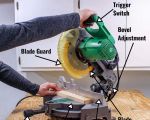How to Install a Wooden Fence with Hand Tools: A Step-by-Step Guide
When it comes to installing a wooden fence, using hand tools can be a satisfying and fulfilling way to create a lasting boundary for your property. Not only does this approach allow you to connect more with the process, but it also saves money and can be completed without the need for expensive machinery. If you're wondering how to install a wooden fence with hand tools, this step-by-step guide will walk you through the entire process, ensuring that your project turns out great.
1. Gather Your Materials and Tools
Before you start digging and hammering, make sure you have everything you need. Here's a list of tools and materials you'll need for a successful wooden fence installation:
- Wooden posts (4x4 is a common size)
- Wooden boards for the fence
- Concrete (optional, but recommended for stability)
- Gravel for drainage
- Shovel
- Post hole digger
- Level
- Measuring tape
- Hammer or mallet
- Handsaw or circular saw
- Wood screws or nails
- Fence brackets (optional)
2. Plan and Mark Your Fence Line
Planning is key when it comes to building a fence. First, measure the length of your fence line and determine how many posts and boards you'll need. Ensure that you’re installing the fence within your property line, and consider any local regulations or HOA rules that might affect your installation. Once you have your measurements, use stakes and string to mark the boundaries of the fence line.
3. Digging Post Holes
Using a post hole digger, begin digging the holes for your fence posts. The holes should be about 2 to 3 feet deep, depending on your area’s climate and the type of soil. Deeper holes provide more stability, especially in areas with harsh weather conditions. Make sure the holes are spaced correctly according to the width of your wooden boards. For most fences, the spacing will be between 6 to 8 feet apart.
4. Setting the Fence Posts
Once the holes are dug, insert your wooden posts into the holes. Use a level to ensure that each post is standing straight. At this point, you can either fill the holes with concrete for extra stability or use gravel for drainage purposes, which helps prevent the posts from rotting. If you’re using concrete, make sure to leave the posts in place to cure for at least 24 hours before moving on to the next step.
5. Attaching the Fence Boards
Once the posts are secure, it’s time to attach the wooden boards to the posts. You can either use screws or nails to attach the boards to the posts. Start by attaching the boards at the bottom and then work your way up, leaving enough space between each board for proper ventilation. This spacing is especially important for areas with high humidity or rainy seasons to avoid mold growth. Make sure the boards are straight and level as you work.
6. Finishing Touches
After all the boards are attached, you can finish the edges by trimming any excess wood. If you want to add a little extra durability and aesthetic appeal, consider staining or painting your wooden fence. This helps protect the wood from the elements and enhances the overall look of your fence.
Now you have a sturdy and beautiful wooden fence, all done with your own hands using simple tools! This project can not only improve the look of your property but also provide privacy and security.
Why Opt for Hand Tools?
Using hand tools instead of machinery for your fence installation offers several advantages. First, it's a great way to save money as you won’t have to rent heavy equipment. Second, it allows you to have more control over the details of the installation process, ensuring that each post and board is placed exactly how you want it. Finally, it’s a rewarding experience to look at the fence you've built with your own hands!
For anyone looking to get started on their own wooden fence project, remember that proper preparation and a bit of patience are key. Don’t hesitate to ask for help from a friend or neighbor when lifting the posts into place, and make sure to double-check your measurements before cutting and installing the boards. Your fence will be a testament to your hard work, and it’ll provide beauty and functionality for years to come!
Looking for the best tools for the job? Visit ToolNest for top-quality hand tools and accessories that will make your DIY fence installation a breeze.









